If you have a German Shepherd like me, you’ll know they are intelligent and love to learn new things. One fun and valuable skill to teach your furry friend is how to find things. Whether it’s your keys, a toy, or even a missing person, a well-trained German Shepherd can be an invaluable asset. But how exactly do you train a German Shepherd to find things?
To train a German Shepherd to find things, start with basic obedience training to ensure they understand and respond to commands. Then, introduce the “find it” command and associate it with a specific object or scent. Gradually increase the difficulty by hiding the object in different locations or using different scents.
Use positive reinforcement, such as treats and praise, to encourage your German Shepherd. You can teach them to find people or perform search and rescue tasks as they become more proficient.
But how?
This guide will teach you all the steps you should take to train your German Shepherd to find things. So, whether you want your dog to find items you’ve misplaced, just for fun or competition, or to train him to be a working dog, such as in search and rescue or police work, you’re in the right place.
Let’s get started!
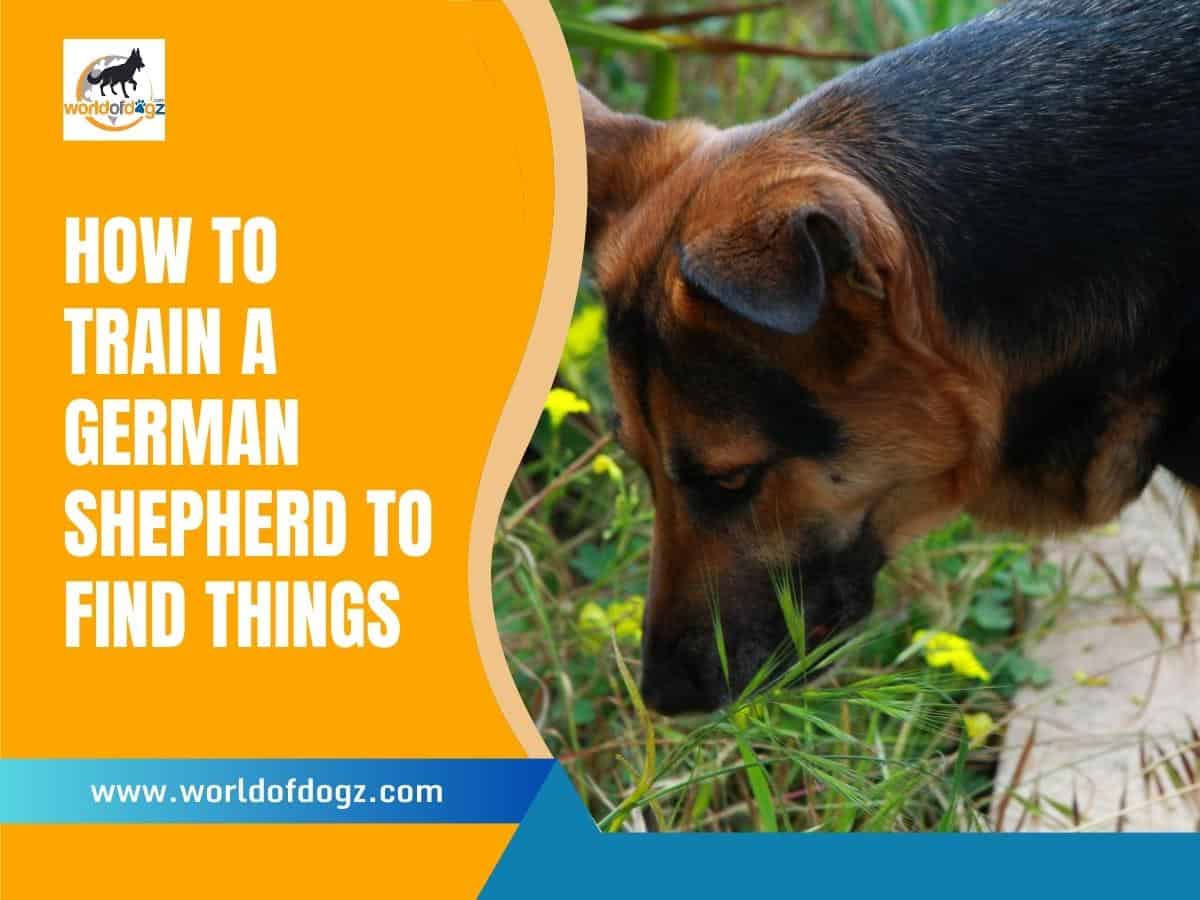
How to Train a German Shepherd to Find Things
German Shepherds are intuitive and have an innate ability to pick up scents. However, they need to be trained before they can use this ability. You should start training your dog to find small retrievable objects from an early age and then progress to tracking.
To train a German Shepherd to track, you must first teach him to find things in a distraction-free environment. Once your dog learns to focus on an object by its scent, you can introduce distractions and add distance. Your German Shepherd will then be ready to track over a long distance.
If you have been to my blog before, you’ll know I spent almost 30 years in law enforcement. During this time, I enjoyed working with the Police German Shepherds, particularly helping the handlers train new search and tracker dogs.
It was crazy how they had me hiding in the woods in the dead of night, waiting for the dog to hunt me out. I was certainly glad of the bite sleeve when the dog found me. But I loved it!
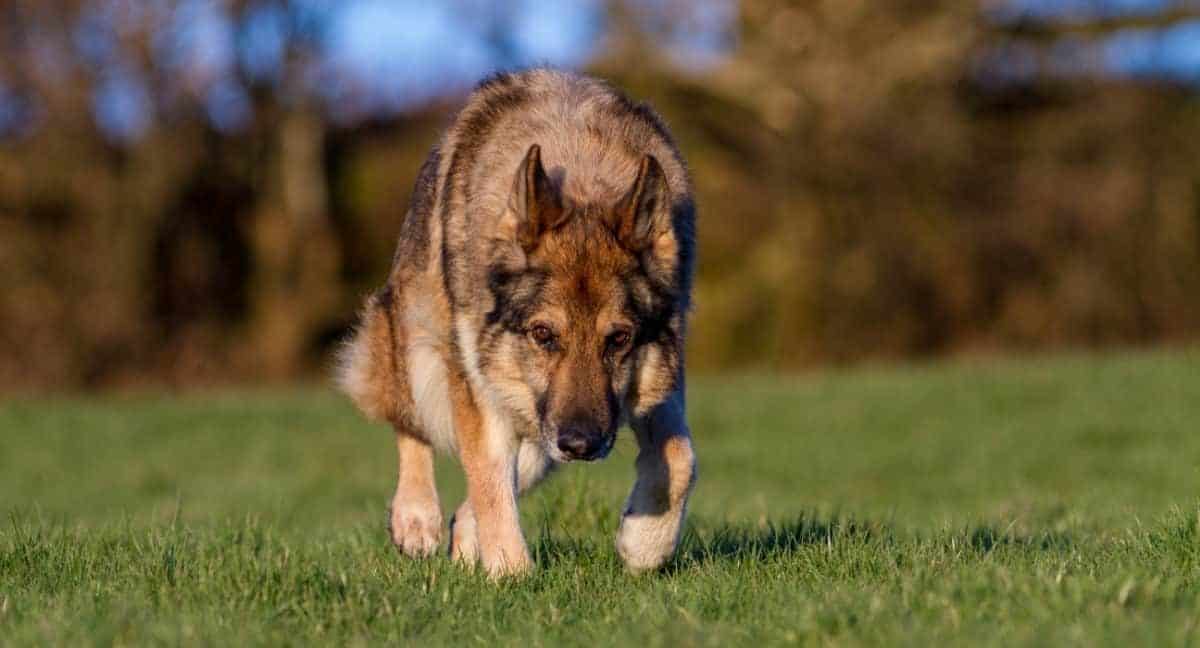
Step 1. Anchor Scent With Play
Dogs love to play, and by being strategic, you can leverage their enthusiasm to educate them about finding objects. Use distinct pet-friendly scents to dust or coat different toys.
Your German Shepherd should develop strong associations between smell and playtime, just like he registers certain smells and noises with feeding time. It takes no more than a week for your dog to understand that each of his toys has a distinct smell.
Step 2. Train Your GSD to “Find” Objects in His View
Instruct your German Shepherd to sit, then let him smell a specific toy. Proceed to place the toy away from him and at a distance. Then point towards the object and command him to “FIND IT.” Your dog will go after the toy because of his interest, but your pointer will guide him, and your command will get registered.
You should do this repeatedly till your German Shepherd realizes that “FIND IT” means he has to retrieve what he just smelled. Of course, you’ll need to bribe your dog with treats, as there is no better way to build up associations quicker than with treats.
Step3. Train Your German Shepherd to Find Hidden Objects
After two weeks of training, a young German Shepherd should be able to “find” visible objects on command even without your pointer finger guiding him.
I recommend you start hiding the toys in the third week. Like the previous step, you instruct your dog to sit and smell the toy. Then you should proceed with hiding the toy in front of him.
Make it simple enough for your German Shepherd to “win” on the first try. Hiding the toy behind a box with a part of it poking into his view could be a great first try. Then you can hide the toy in the same place but entirely out of sight.
Still, your dog is relying on some level of sight to find the object, but he is learning to associate the “FIND IT” command with finding and not just retrieving things in his view.
By the fourth week, you can hide things in a different room and have your dog follow when you command to “FIND IT.”
Now, your dog goes to the other room because he saw you go there to hide the toy, but once he goes into the room, he has to rely on his sense of smell to get to the toy. That is how you get your German Shepherd to rely on his sense of smell to find objects.
Watch How Police Train German Shepherds to Find Things – In This Case, a Human!
Step 4. Start Anti-Distraction Training
At this point, you may be tempted to train your dog to track toys at a distance. While tracking objects by faint smell is essential, it isn’t feasible if your German Shepherd gets distracted.
If you have a huge mansion, you can do the same training described in the above steps and add distance until your dog is excellent at picking up faint scents. But for most people living in smaller spaces, training for long-distance tracking involves taking your dog outdoors.
Outside, your German Shepherd can get easily distracted by people and other stimuli, so you must first train him to track objects despite distractions. To do this, keep repeating the previous training but add a distraction now and then.
One way to do this is by having other tempting toys in the way. Make sure these toys do not have any recent scent on them. You can also invite friends over, especially if they have children!
It might take a whole month of training with distractions before you are ready to take the tracking exercises outdoors.
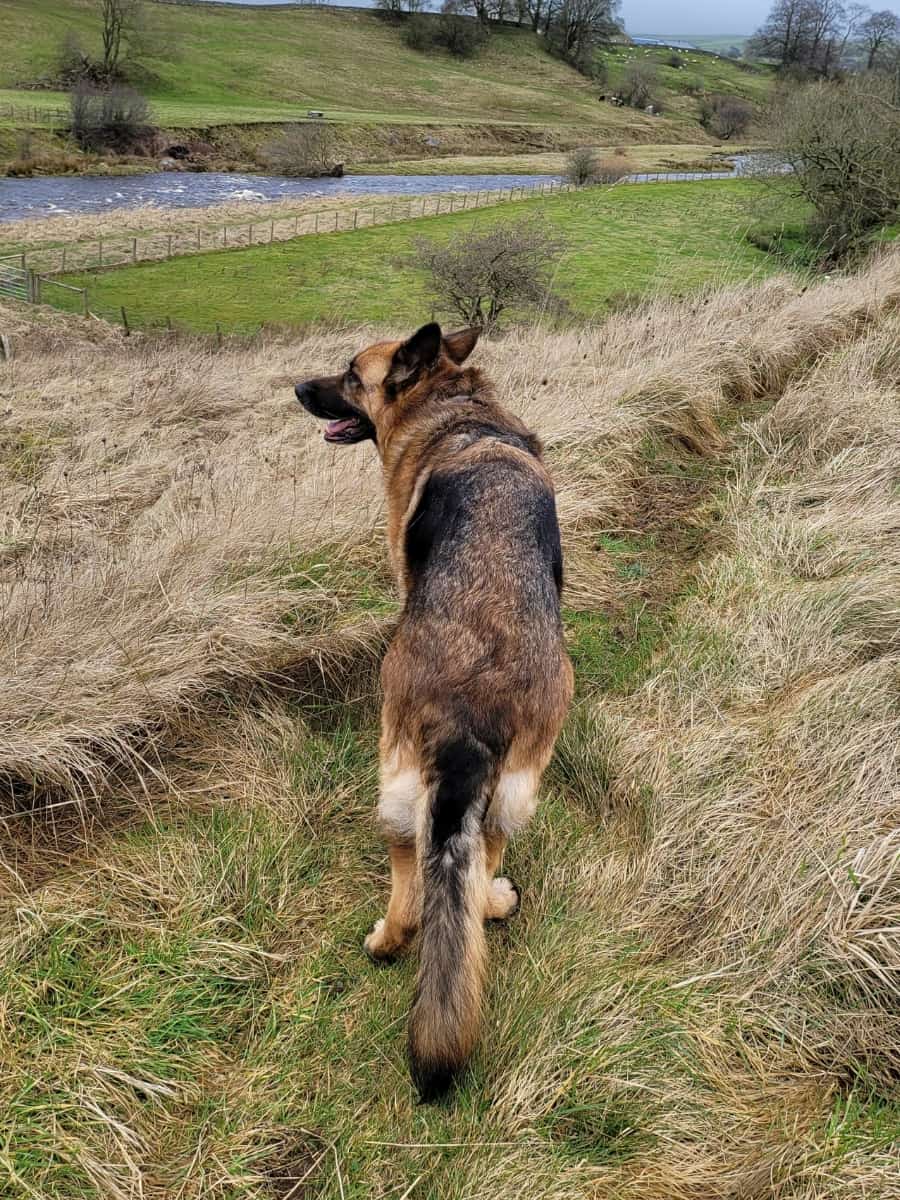
Step 5. Take Your Training Outdoors
There’s some degree of “use it or lose it” tendency with dogs when tracking things by their scent. That’s why you’ll need to engage your German Shepherd’s tracking abilities quite regularly. It is crucial to build your dog’s enthusiasm around tracking.
Many people make the mistake of taking the training outdoors and adding complexity and distance right away. Doing so will make retrieving a chore and will set your German Shepherd up for failure. The outdoor environment is naturally distracting!
So the first retrieving drills will be similar to what you did indoors. You should have a friend accompany you to an open yard. Instruct your friend to hold your dog by the collar or have him on a long leash.
Command your German Shepherd to sit and place his ball 15 feet away. Point towards the ball and say “FIND IT” while drumming up excitement in your voice. You can also talk excitedly while pointing at the ball.
Your German Shepherd will naturally want to chase after the ball. The fact that your friend holds him back for a few seconds will make him more excited about “finally” getting to pursue the object. It also teaches your dog to go after the ball despite the initial resistance.
The next step is to hide the toy while instructing your German Shepherd to find it. Initially, you’ll need to scent it more heavily than indoors, as outdoor stimuli will make it more challenging for your dog to track the scent. While using heavy smell, you should start hiding objects out of your dog’s sight so he relies more and more on his sense of smell, even outdoors.
The final stage of your dog’s outdoor tracking training involves bringing his tracking skills to a practical situation. In real-life tracking scenarios, you don’t hide the object after letting your dog smell it. You let your dog smell something with the object’s scent and let the dog guide you to wherever the said object is.
To replicate this towards your training’s tail-end, you will apply the scent to something the dog wouldn’t be fond of putting in his mouth. Apply the same scent to a rag and a toy. Pre-hide the toy while your dog is not looking. Command your dog to sit, and place the rag close to his nose as he sits.
Take the rag away from his nose and pretend to throw it in the direction where you have hidden the object and say, “FIND IT” Your dog will run because he assumes you have thrown the item in that direction, but he reverts to using his nose as he gets closer.
Using his sense of smell, he will find the toy. You can expect this step to take a few tries, but you should reward him with a treat when he’s successful and give lots of praise.
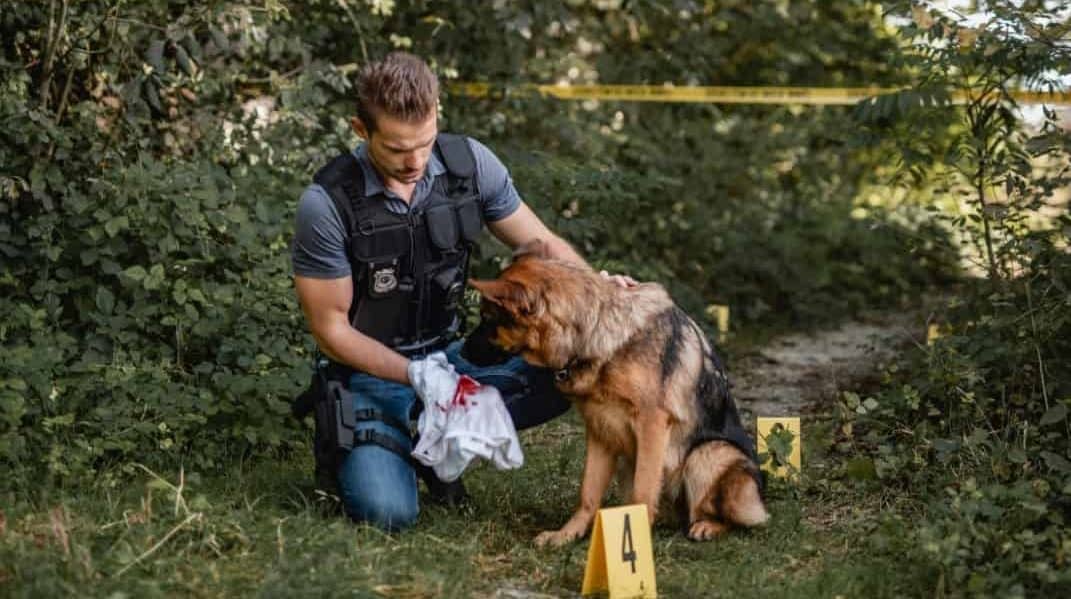
Step 6: Train Him With a Focus on Specialization
The final stage of training your German Shepherd’s tracking abilities is specialization. Now that your dog can associate the scent with the target, you need to use decoys of whatever you want your dog to track. This phase can last up to three months if you’re working with older dogs.
It is best elaborated in this article about deer tracking, although you can use the same strategy with targets, including birds.
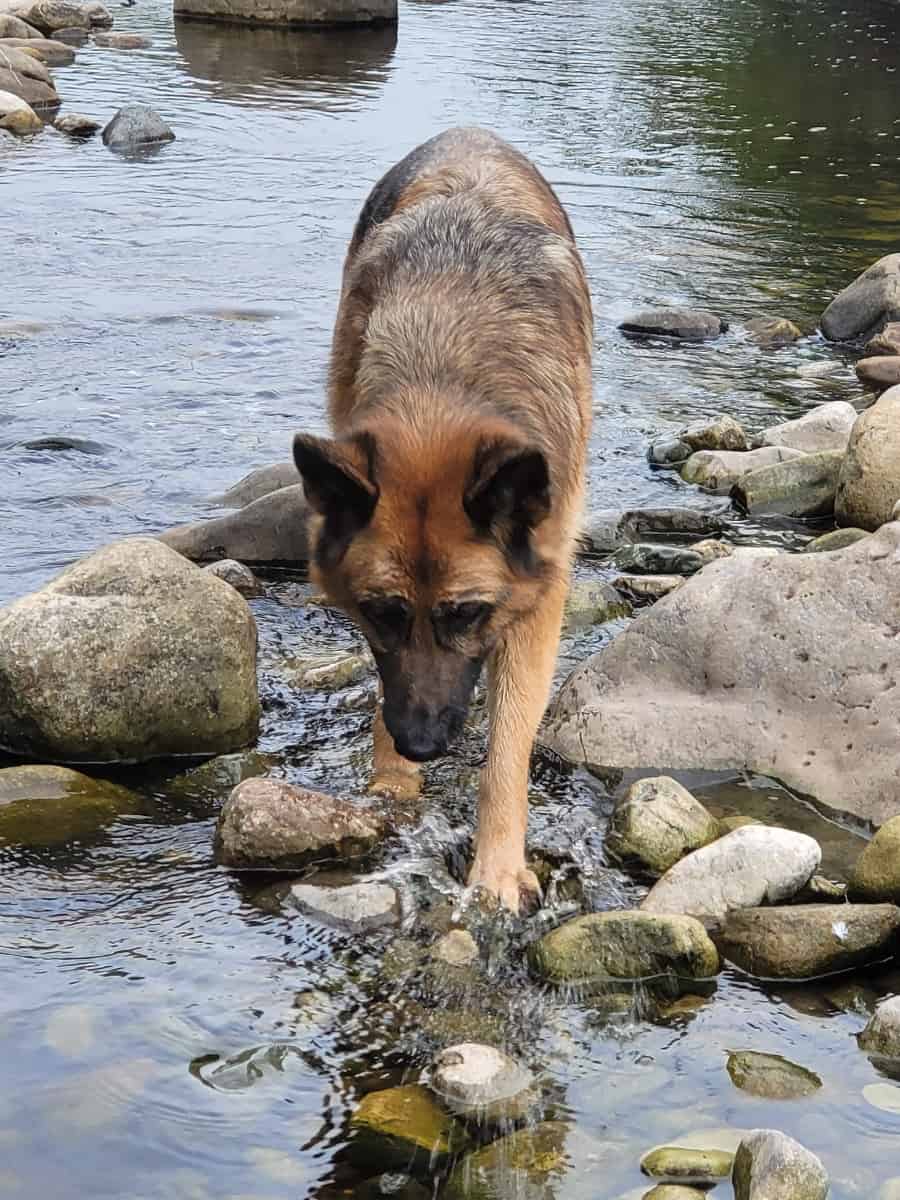
Are German Shepherds Good Tracking Dogs?
German Shepherds derive their name from their traditional use in shepherding farm animals. They are highly effective guard dogs and are reliable work companions in security-related jobs. They also specialize in tracking, whether missing people or criminals, and often don’t get the deserved limelight.
German Shepherds are good tracking dogs as they have an extraordinary ability to sniff out faint scents from a distance and can focus and drown out distractions while seeking their target. They also use many of their natural positive traits to excel in tracking skills, such as intelligence, stamina, and loyalty.
If you’re wondering whether your German Shepherd at home can learn to sniff and find things, you should be ready to spend at least three months training him. Alternatively, if you are contemplating adopting a dog to help you track for game hunting, I would recommend getting a puppy, as they’re easier to train.
Watch This Fun Video on How a German Shepherd Easily Tracks Down a Man on the Run…
FAQs
What are some good things to hide so my German Shepherd can practice finding them?
Hide various toys, such as squeaky balls, and chew toys. Make sure to hide them in different locations and heights so your German Shepherd has to use their nose to find them. You can also hide treats such as kibble, biscuits, or small pieces of meat in different locations. This will encourage your GSD to use their nose to find the treats and will help to keep them motivated during the training session.
What should I do if my German Shepherd has trouble finding things during training?
If your German Shepherd is having trouble finding things during training, make sure that your training sessions are short and focused. If your German Shepherd is having trouble finding things, it could be because the training session is too long and they are overwhelmed. Keep the sessions short and focused on one task at a time. Also, make sure you use positive reinforcement when your dog finds something.
What common mistake do owners make when training their German Shepherd to find things?
A common mistake owners make when training their German Shepherd to find things is not establishing a clear command. Setting a clear command for your dog to find something is essential. Without a clear command, your dog won’t know what you expect of them and will be confused. When training your GSD to find something, use a specific command such as “Find it” or “Seek” and use it consistently.
Final Thoughts
Teaching my German Shepherd “Willow” to “FIND IT” was one of the first commands I taught her. If you have a German Shepherd at home, you can quickly train your dog to find and track things, and it’s great fun! However, the training period is inversely correlated with age to a degree.
Start training your dog at a young age. However, you can teach even an older GSD new commands with patience and consistency.
If you want to train your dog to track for sport, the American Kennel Club tracking events are the competition form of canine search and rescue.
A quick online search will find dog tracking events and associations in your area, such as the UK Tracking Dog Association in the United Kingdom.
Related Posts You May Like:





